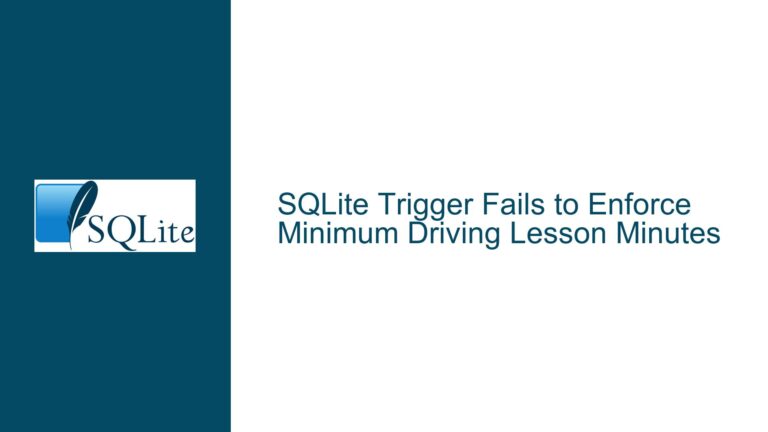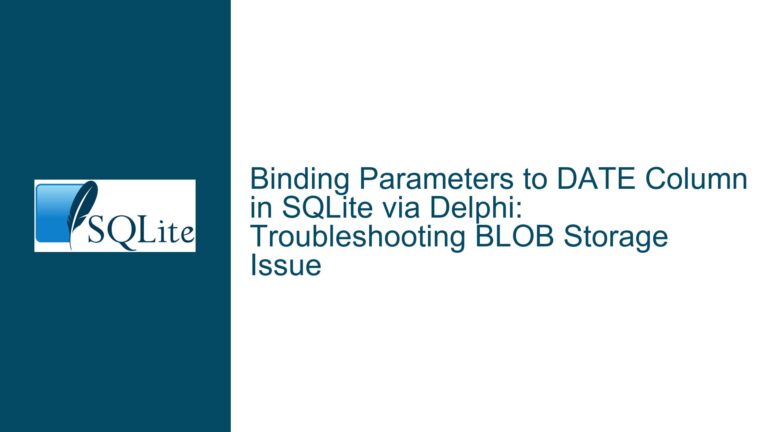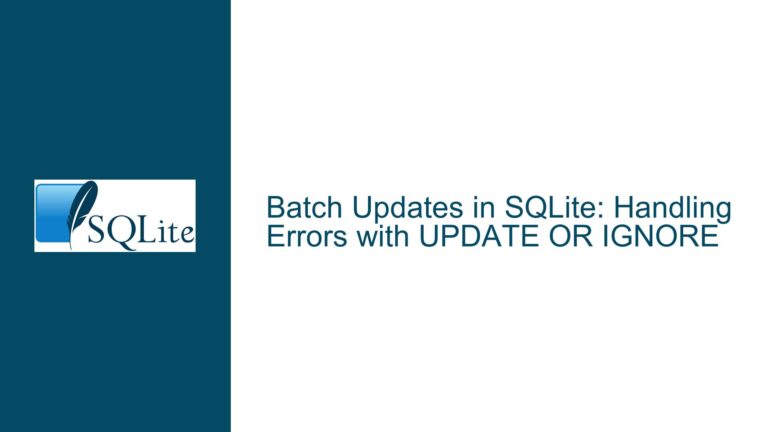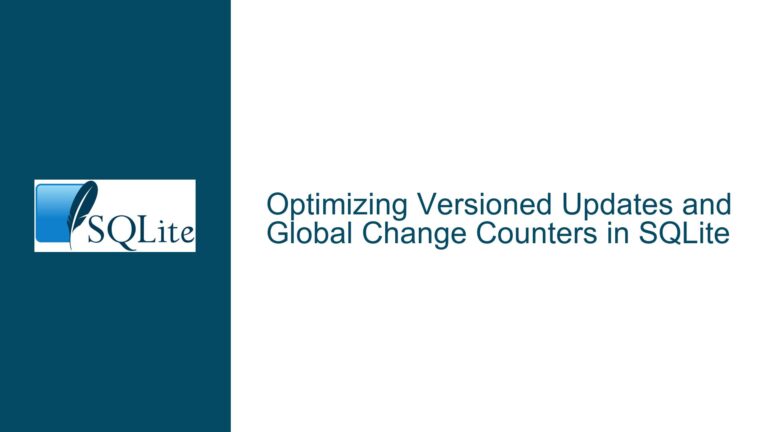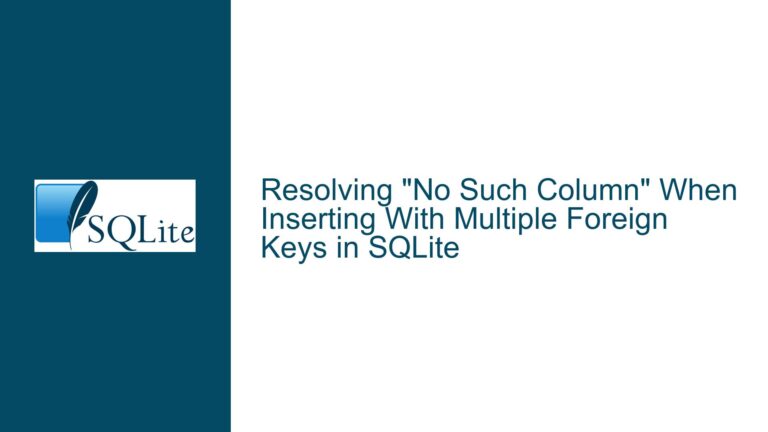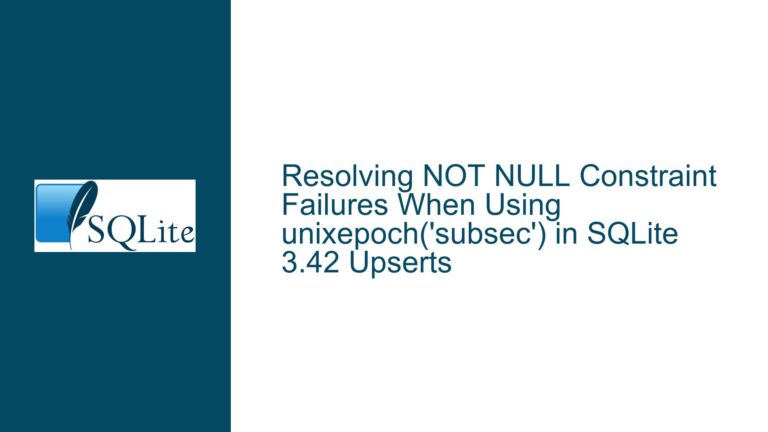Efficiently Importing JSON Data into SQLite: Strategies and Solutions
Understanding JSON Import Requirements in SQLite
When dealing with JSON data import into SQLite, the primary challenge revolves around the structure and complexity of the JSON file, as well as the state of the target SQLite database. The process can vary significantly depending on whether the database is being created from scratch or if it already exists with a predefined schema. The goal is to ensure that the JSON data is accurately and efficiently mapped to the SQLite table structure, maintaining data integrity and optimizing performance.
The JSON format, being inherently hierarchical and flexible, does not always align directly with the tabular structure of SQLite databases. This misalignment necessitates a thoughtful approach to data import, especially when dealing with nested JSON objects or arrays. The complexity increases when the target SQLite table has multiple columns, each requiring specific data types and constraints.
Challenges in JSON Data Import and Schema Alignment
One of the main challenges in importing JSON data into SQLite is ensuring that the JSON structure aligns with the SQLite table schema. This alignment is crucial for maintaining data integrity and avoiding errors during the import process. When the JSON data is simple and flat, the import process is relatively straightforward. However, when the JSON data contains nested objects or arrays, the process becomes more complex.
In cases where the JSON data is nested, it is often necessary to flatten the structure before importing it into SQLite. This flattening process can be done manually or through automated tools, but it requires a deep understanding of both the JSON structure and the target SQLite schema. Additionally, the import process must handle data type conversions, ensuring that JSON strings, numbers, and booleans are correctly mapped to SQLite’s data types.
Another challenge is dealing with large JSON files. Importing large JSON files into SQLite can be resource-intensive, especially if the data needs to be transformed or validated during the import process. Efficiently handling large JSON files requires careful planning and optimization to avoid performance bottlenecks.
Step-by-Step Guide to Importing JSON into SQLite
To import JSON data into SQLite, follow these detailed steps:
Prepare the JSON Data: Ensure that the JSON data is in a format that can be easily imported into SQLite. If the JSON data is nested, consider flattening it to align with the SQLite table structure. Tools like
jqcan be used to preprocess the JSON data, ensuring that each JSON object is on a single line.Create or Identify the Target SQLite Table: If the SQLite database does not exist, create a new database and define the table schema based on the JSON data structure. If the database already exists, ensure that the table schema matches the JSON data structure. The table should have columns that correspond to the keys in the JSON objects.
Set the SQLite CLI Mode: Use the SQLite Command Line Interface (CLI) to set the import mode. The
.mode linecommand ensures that each JSON object is treated as a single line of input, which simplifies the import process.Import the JSON Data: Use the
.importcommand to import the JSON data into the SQLite table. If the JSON data has been preprocessed usingjq, the import command should reference the preprocessed file. For example:.mode line .import "|jq -c . filename.json" tablenameThis command imports the JSON data into the specified table, with each JSON object treated as a single line.
Handle Nested JSON Data: If the JSON data contains nested objects or arrays, consider using SQLite’s JSON functions to extract and transform the data. Create a single-column view on the table and use an
INSTEAD OF INSERTtrigger on the view to unpack the JSON objects and insert the data into the real table. This approach allows for more complex data transformations and ensures that the nested data is correctly mapped to the table columns.Validate the Imported Data: After importing the JSON data, validate the data to ensure that it has been correctly mapped to the SQLite table. Check for any data type mismatches, missing values, or other inconsistencies. Use SQL queries to verify the data integrity and make any necessary adjustments.
Optimize Performance: If the JSON file is large, consider optimizing the import process to improve performance. This may involve batching the import process, using transactions to group multiple inserts, or indexing the table to speed up data retrieval. Additionally, consider using SQLite’s
VACUUMcommand to optimize the database file after the import process.
By following these steps, you can efficiently import JSON data into SQLite, ensuring that the data is accurately mapped to the table schema and maintaining data integrity throughout the process. Whether you are working with a new database or an existing one, these strategies will help you navigate the complexities of JSON data import and achieve optimal results.

